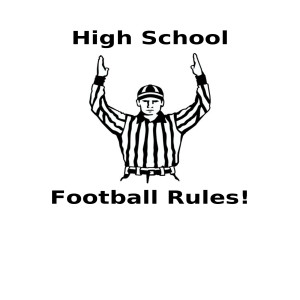A Comprehensive Guide on the Rules of High School Football
High school football in the United States operates under a unique set of rules established by the National Federation of State High School Associations (NFHS).
These regulations ensure a safe, balanced, and competitive environment suitable for young athletes’ development. If you are interested in participating in high school football, it’s essential to understand the specific rules and variations that distinguish it from other levels of play.
In this article, we’ll delve into several key aspects of high school football rules:
- How game length and kickoff placements differ from collegiate and professional levels.
- Specific rules regarding field goals, extra points, and scoring mechanics.
- Details on how defensive encroachment and pass interference are handled differently.
- A look at how states like Texas customize NFHS rules to fit their needs.
- Updates and changes that reflect the sport’s evolution focusing on safety and competitiveness.
Core Rules and Gameplay Adjustments
High school football games consist of four quarters, each 12 minutes long, aligning with NFHS regulations but shorter than college and NFL games. This duration supports the physical capabilities and safety of younger players. Kickoffs occur at the 40-yard line, closer than in other forms of the game, reducing the run-up distance and potential collision speed, and improving player safety.
Field goal rules in high school football also prioritize safety and skill development. Missed field goals that do not reach the end zone are treated as punts, providing a natural learning curve for kickers and strategic depth for teams. Using a kicking tee is permitted for field goals and extra points, differing from NCAA rules that have banned tees since 1989.
Defensive and Offensive Strategies
Defensive play in high school emphasizes learning and execution over sheer physical dominance. The NFHS rules prohibit returning an extra-point attempt, focusing on standard defensive plays. Encroachment by the defense leads to a dead ball foul, immediately penalizing movement across the neutral zone without the snap, simplifying rulings for officials and players.
Offensively, pass interference does not guarantee an automatic first down, merely a 15-yard penalty. This rule promotes clean play over tactical fouling. Furthermore, offensive strategy must adapt to the absence of a two-minute warning, a
rule exclusive to professional leagues.
Unique State Rules and the Texas Exception
Texas stands out by integrating NCAA rules with specific modifications. This includes continuing to use a kicking tee and specific adaptations to kickoff and touchback placements. Such deviations highlight the flexibility within high school sports governance, allowing states to tailor rules that best fit their educational and athletic objectives.
Recent changes in high school football rules reflect ongoing efforts to enhance safety and competitiveness. For instance, the introduction of a play clock and adjustments to handling touchbacks align high school football more closely with higher levels of play, preparing students for potential college careers. Adopting a mercy rule in several states, including a continuous clock or game cessation based on score differentials, addresses sportsmanship and player safety during lopsided games.
